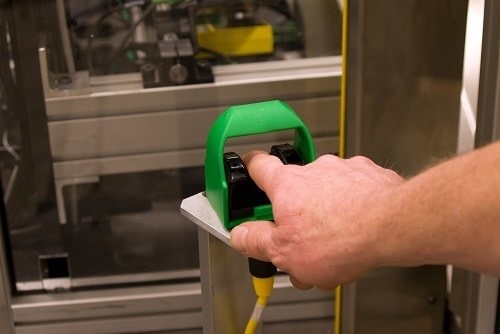Fallibility is part of the human condition, and it’s a beautiful thing. But designing this into safe systems of work is an ongoing challenge for safety professionals and human factors specialists alike.
Features
The soft machine
So, what can be brought to the table by forging links between the professions, to create a health and safety culture that accommodates for, and encourages a shift in human behaviour and, ultimately, avoids accidents and ill health at work.
With the latest government legislation to adhere to, guidelines to enforce and equipment to test, it can be argued that the safety world can fall foul of placing too strong an emphasis on usage. With a 70-year unblemished history of getting inside the ‘soft machine’ that is people, human factors can help safety teams take a critical step back and get under the skin of human behaviour and the implications this has for any system and job role.
Managing human failure
‘Human error’, the dreaded scapegoat term we see blasted across news headlines every day serves little purpose other than to blame and shame. But how are we, as safety professionals, to take real learnings away from the incidents we’re involved with?
Taking a socio-technical view, whereby we examine both the people and the technology within a system, it is very often the case that an event does not have a singular cause. We can start to determine whether there may be a cumulative set of conditions that lead to an incident. Reports into the causes of several major disasters have stressed both the influence of human error and failures in management and the organisation of safety in the companies concerned.
 We must take a people-centred approach to make a real impact. Photograph: iStock/DNY59
We must take a people-centred approach to make a real impact. Photograph: iStock/DNY59
Eloquently put by the Health and Safety Executive, our challenge is to develop error-tolerant systems and to prevent errors from initiating. So how do we do this? If we take the example of physical harm, do we need to know how to design systems that are technologically safer?
Absolutely! However, we must also focus and challenge ourselves to modify the behaviour of our workers. As a non-intuitive skill, we don’t naturally know how to protect ourselves. So, we must instil this learned behaviour in the workforce.
This can involve working alongside a specialist human factors consultant in defining behaviours: what is safe and unsafe, what do we observe, and how do we feedback and reinforce.
Ultimately, behavioural safety approaches exist to challenge and improve behaviour, leading to a culture of constructive challenge, identification of hazardous situations and the systems of work and solutions that are needed to address these.
Influencing human behaviour
Management and organisational factors have a large influence on accidents and incidents, either directly or through their impact on the behaviours of employees.
As we see a greater focus placed on health and wellbeing these days, a solid example of behaviour modification can be seen in the safety industry’s approach to office desk set-up. While it is tempting to simply go out and order the latest ‘ergonomically-designed’ chair, sit-stand desk or footstool, the greatest area you can have impact is on addressing the behaviours in your workers to use these tools safely.
 The idea that technology will replace the need for creative thinking, problem-solving, leadership and initiative is laughable
The idea that technology will replace the need for creative thinking, problem-solving, leadership and initiative is laughable
Musculoskeletal disorders in the back, neck, shoulders and wrists, are hugely common, even among those with the supposed correct equipment. If Margaret is sitting at her desk solidly for three hours without a break from the screen or posture position, no wonder chair in the world is going to prevent her from injury. The more we involve Margaret in her own safety, the more invested she becomes, and the safer and less problematic her role becomes.
Understanding fallibility
Work-related stress is on the rise, and increasingly on the safety professional’s radar. We don’t degrade gracefully, and in an age where increasing competition and pressure to perform have become part of many work cultures, how do we know when enough is enough? Generally, humans perform to a simple elastic model – when we reach breaking point, we literally snap! And right now, we have not one model that is enough to determine when this will happen.
By recognising that a person is not a simple machine, and that the idiosyncrasies we place upon them must be factored into the design of the entire job, we can help both physical and mental health in the workplace.
While the media continues to focus on technology taking over the world and robotics and automation putting us all out of jobs, we as safety professionals know all too well that people are truly amazing and will drive our workforce indefinitely.
The idea that technology will replace the need for creative thinking, problem-solving, leadership, teamwork and initiative is laughable right now. However, the concept that people can leverage technology to provide a better world for all of us is a reality. Working closely together, we can transform safety culture and put humans at the heart of all that we do!
For further information, visit Chartered Institute of Ergonomics and Human Factors website here
Nigel Heaton is Founding director at Human Applications
FEATURES

Why line managers play a vital role in workplace wellbeing
By Marcus Herbert, British Safety Council on 03 September 2023
The behaviours of line managers can have a positive or negative impact on employee health, wellbeing and engagement, so it’s vital managers get staff feedback on whether their management style is supportive or negative, and have regular check-ins so workers can raise concerns about their wellbeing.

Watercooler Event to hone in on eight trends in employee health and wellbeing
By Claire Farrow, Make a Difference Events & Media on 15 April 2024
The free-to-attend Water Cooler Event at ExCeL London on 23–24 April will see more than 6,000 workplace experts coming together to explore the latest thinking, solutions and best practice for supporting and boosting employee wellbeing, diversity and workplace culture.

Sedentary working and how to combat the ‘sitting disease’
By Gavin Bradley, Active Working on 05 April 2024
Prolonged and excessive sitting poses a major risk to our health, but the Get Britain Standing campaign and On Your Feet Britain Day on 25 April are a great way of encouraging workers to sit less and move more.



